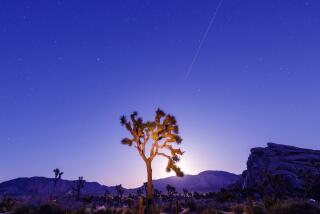Ceres: Bright spot on dwarf planet is a twofer, NASA spacecraft finds
NASA’s Dawn spacecraft has snapped even clearer views of Ceres, but its surface just keeps getting curiouser and curiouser. A strange bright spot on the dwarf planet now appears to have a companion spot shining right next to it.
Bright spots are often thought to have icy origins, though a Dawn project member has said that the readings from Ceres don’t appear consistent with pure water ice. However, the mission’s lead scientist has now floated another possible explanation.
“This may be pointing to a volcano-like origin of the spots, but we will have to wait for better resolution before we can make such geologic interpretations,” Dawn principal investigator Christopher Russell of UCLA said in a statement.
Mysterious Ceres is one of five dwarf planets (which include Pluto) and the largest member of the asteroid belt stretching between the orbits of Mars and Jupiter. Because asteroids are rocky leftover building blocks of planetary formation, studying these space fossils could help reveal what the early solar system looked like.
Ceres is also in a unique position in the asteroid belt, said Carol Raymond, Dawn’s deputy principal investigator and a geophysicist at Jet Propulsion Laboratory.
“The really neat thing about Ceres is that it’s kind of straddling a lot of boundaries between ... the rockier asteroids in the inner part of the asteroid belt and the wetter asteroids in the outer part of the belt,” Raymond said in an earlier article.
But little has been known about this dwarf planet -- the best images, until Dawn came along, had been grainy shots taken by NASA’s Hubble Space Telescope in 2003 and 2004. Back then, scientists thought the dwarf planet would have a smooth, icy surface.
But Dawn’s newer images -- getting clearer as the spacecraft approaches its target -- show bright spots and darker areas that reveal that the surface is much rougher than may have been expected. The most recent shots show that the brightest spot actually has a little companion, in the very same basin.
“What we expect at Ceres is to be surprised, so it’s getting off to a good start,” Raymond noted in an earlier article. As Dawn approaches Ceres and enters orbit March 6, increasingly high-resolution images will offer an unprecedented look at the dwarf planet.
Ceres is one of a few icy “water worlds” in our solar system (including Saturn’s moon Enceladus and Jupiter’s moon Europa) that could potentially harbor a subsurface ocean and some potential for microbial life.
The dwarf planet is actually Dawn’s second stop -- the spacecraft first visited giant asteroid Vesta from 2011 to 2012. Where Vesta is dry and lumpy, Ceres is icy and round -- and their divergent life histories could help scientists understand the evolution of the early solar system.
Do you love science? Follow @aminawrite for more dispatches from our solar system.







